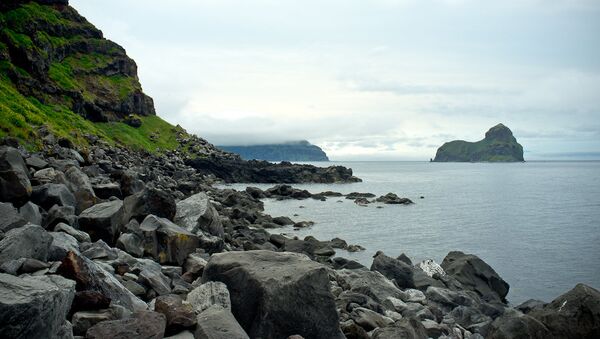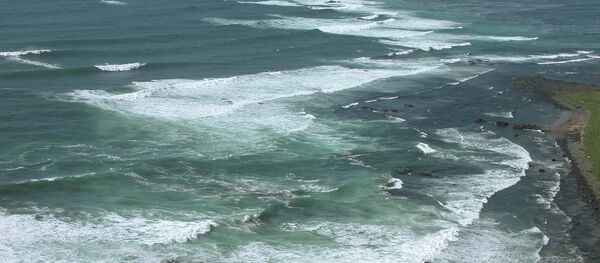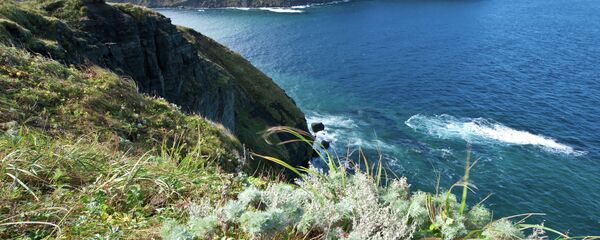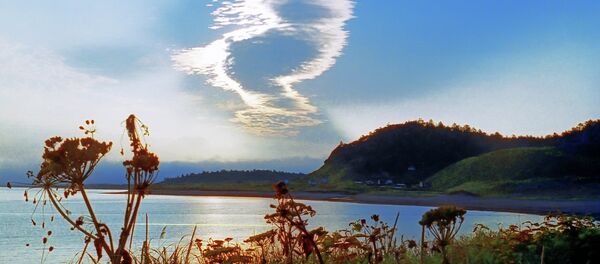The territory has been administered by Russia since the end of WWII, but the Japanese government still lays claim to the four islands: Kunashir (known in Japanese as Kunashiri), Iturup (Etorofu), Shikotan and the rocky Habomai islets.
In a rare visit to Russia, Japanese Prime Minister Shinzo Abe met President Vladimir Putin for talks at the Black Sea resort of Sochi earlier in May and the two leaders agreed to take a “new approach” to the decades-long territorial dispute over the four southernmost islands in the Pacific Kuril chain.
The Russian government has recently approved a federal target program for the socioeconomic development of the Kuril Islands until 2025.
"Lifting the infrastructural constraints for the development of the economy and improving the quality of life, creating conditions for the development of raw material processing using the latest technologies, as well as innovation developments adapted to the conditions of the Kuril Islands, as well as the modernization of the islands' social infrastructure are among the expected results of the program," the document reads.
The total cost of the new initiative was estimated at approximately $1.2 billion.
“What makes this program different from the earlier development projects is that this time the Russian Military are guaranteeing its implementation,” contributor Petr Bologov writes in his article for the Center’s website.
“And judging by the tenacity of the Russian authorities in refusing to cut military spending, even amid the economic crisis, such a guarantee should be treated seriously,” the author says.
Earlier in July the Russian Federal Agency for Special Construction (Spetsstroy) announced that Russia’s military infrastructure on two of the Kuril Islands in the Pacific will be reinforced with fortifications, firing ranges and ammunition storage bases.
Over 500 workers and 100 pieces of equipment are involved in the construction, it added, which includes accommodation, cultural, leisure and sports facilities that span nearly 155,000 square miles and include 392 buildings.
"The active construction of infrastructure facilities for the Russian Armed Forces on the Kuril Islands of Iturup and Kunashir continues… The project involves the construction of purpose-built military facilities: sites, training grounds, munitions and hardware storage areas," Spetsstroy said in a press release.
The reports suggested that to reinforce this “outpost” of Russia, the Eastern Military District will be provided with some 700 units of military equipment and weaponry in 2016.
The rearmament plan also includes 60 new aircraft and helicopters, in addition to three vessels and over 20 drones. Furthermore an extra 22,000 contract troops have been deployed in Russia’s Far East over the past year, the district's forces now number 65,000 people.
Russia is also set to deploy some of its newest missile defense systems on the islands.
"The Bal and Bastion Coastal missile systems and next generation Eleron 3 drones will be deployed there this year," Russian Defense Minister Sergei Shoigu announced earlier in March,
The Bastion is a mobile defense system armed with two anti-ship missiles with a range of up to 300 km (188 miles). It has also been deployed in Crimea. The Bal anti-ship missile has a similar range.
Reports suggest that the group of Russian forces stationed on the Kuril Islands is already equipped with such modern weapons as T-80 tanks and a Buk-M1 air defense system.





